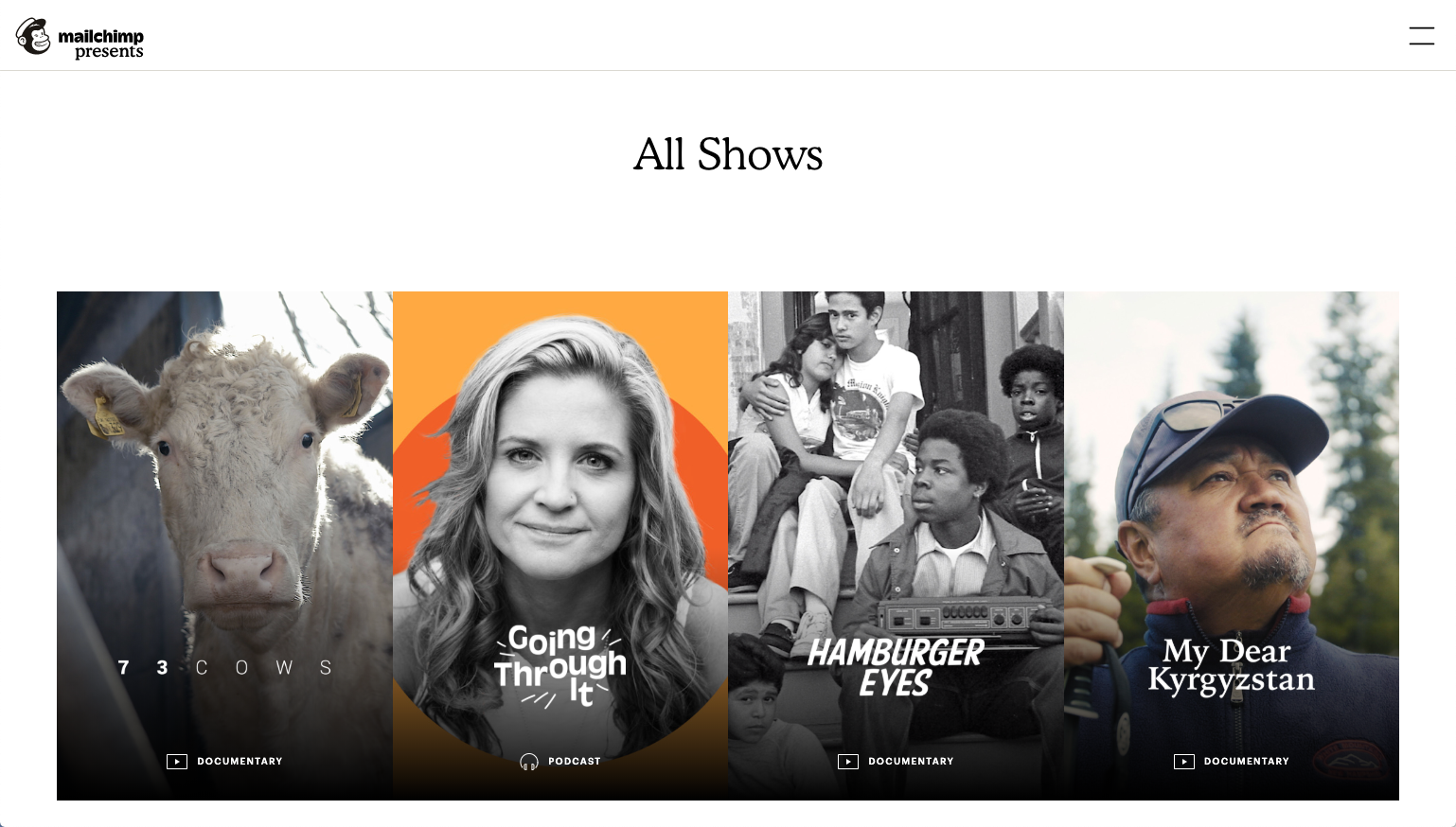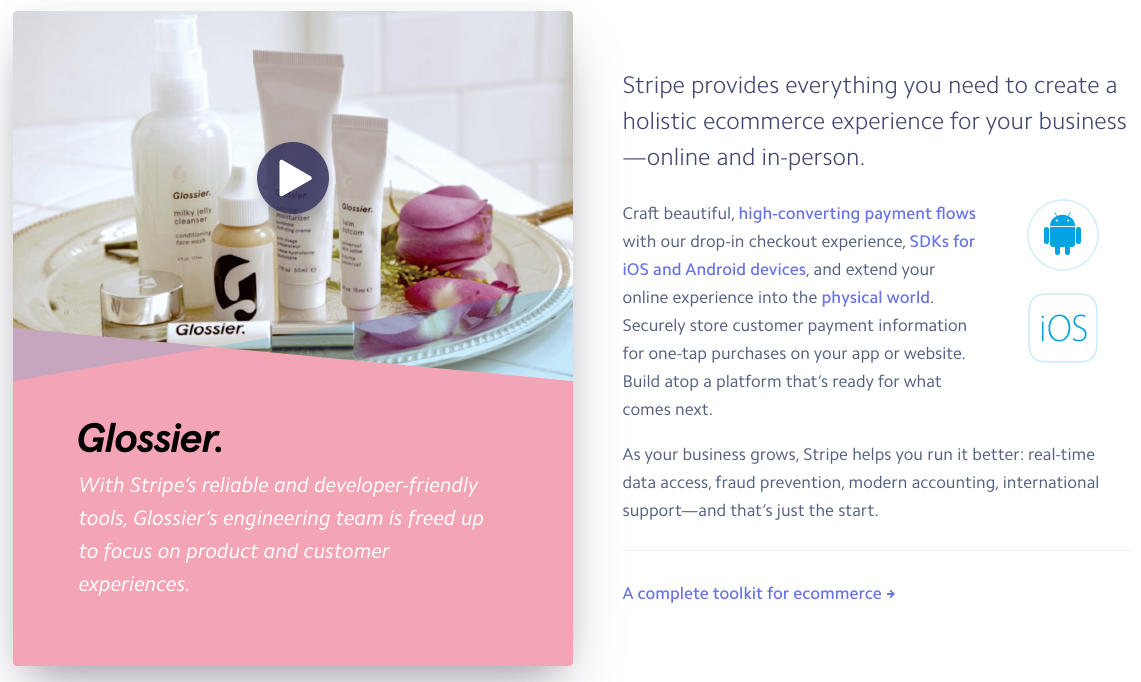One of the core concepts of online marketing is the idea that the sales process neatly resembles a funnel. Although there are many variations, a typical marketing funnel starts with awareness, then consideration, and finally ends with a purchase decision. Since prospects drop off at each progressive stage, the whole system does in fact look like a funnel. At least in theory.
The reality is that most paths to purchase are a LOT messier than that. Consumers may encounter your brand at any point in their decision-making process, or unexpectedly shift between stages, such as going from consideration back to awareness or even straight to purchase.
So, what does that mean for marketers? It means your content strategy needs to reflect this reality if you’re going to successfully win new business. So, throw out that old, stale rule book. Here’s how to map your marketing videos to the new path to purchase, with examples from Slack, Ahrefs, Mailchimp, and more.
Why The Funnel Is Outdated
Before we dive into what you should do, let’s quickly review why the funnel model is antiquated in today’s mobile-first world. The concept of a marketing funnel has been with us for so long because it’s comforting in its simplicity, and up until smartphones became ubiquitous, it wasn’t terribly inaccurate.
Today, except in rare cases, consumers are starting out with more information, and more distractions, than ever. That means it’s harder to attract their attention and keep it, even if the customer in question is shopping in a physical store.
Ultimately, this makes the path to purchase more haphazard, and prone to being rerouted, abandoned, or revisited with greater frequency and less predictability. At the end of the day, it’s less linear and more complex than a funnel concept allows for.
By sticking with a linear model to reach a non-linear customer, you risk missing important touch points that could impact their purchase decision. In addition, you’re more likely to miss the mark when designing your content by baking too many assumptions into your marketing materials.
The New Rules for the Path to Purchase
So, all that sounds like a headache and a half for marketers. Without a framework for devising content, how can you reach your target audience at the right moment to drive sales?
In many ways, the new path to purchase presents more opportunities for creativity for marketers because it requires more flexibility. It also better reflects the fact that many forms of content can serve double-duty for different marketing aims.
Forget trying to place customers into neat, progressive stages. The new path to purchase is illuminated in very different ways. Here are seven new rules for crafting video content to drive more sales.
1. It All Starts With Search
No matter who you’re trying to reach, your target audience likely has lots of questions, and they expect immediate answers. It’s second nature to grab a phone to verify a query, no matter how trivial.
Sometimes, it’s not necessarily a specific question that needs satisfying, but an equally compelling urge to be entertained or informed. Still, the steps you might take look very similar to seeking out an answer to a clearly defined question.
You’d likely start with a search engine, or a large, authoritative website known as a destination for what you’re looking for. From there, you’d be able to search for what you’re looking for, and hopefully find it.
Data from Google confirms this: nearly all consumers start with a web search as their first touch point when beginning their buyer’s journey.
This is very different from the “awareness” stage of the funnel. There are no assumptions baked into this approach about how much someone undertaking a search might know about your brand, product category, or competitors. Rather, it forces you to focus more narrowly on topics, their alignment with your brand or product, and the needs of the consumer.
What This Means For Video
The opportunity for video marketers here is the element of discovery. Visibility is key. In this context, that means a solid video SEO strategy, as well as highly engaging content.
Take a broad view and think about the needs of your customer. What are they searching for online? Where are the on-brand opportunities for you to connect with them as they’re doing so?
After performing that exercise, gather search keyword data to analyze which queries are most relevant to your business. Look for long-tail keywords, and adjacent keywords. These terms can help shape your video topic selection going forward.
Note: want to learn more about conducting keyword research? Check out the example from Ahrefs below in Rule #2.
Mailchimp and Entrepreneurs
For example, Mailchimp recently launched Mailchimp Presents, a new section of their website focused on content for, by, and about entrepreneurs. Since a large portion of their existing customer base is made up of entrepreneurs and small businesses, this approach makes a lot of sense.

By targeting their original video series around the needs of entrepreneurs, they’re speaking directly to their audience. They’re also providing a new destination for the entrepreneurial community online, whether they’re seeking entertainment, inspiration, or information.
Importantly, Mailchimp’s video series could be appealing to existing customers, people considering their services, and even those who have never heard of their business before. Since it’s highly relatable for their target audience, the videos are really shareable.
2. Be Helpful Throughout
Help can take many forms. Sometimes it’s straightforward – someone needs assistance to achieve a specific goal, like installing shelves. Other times, it’s helping them feel happier, learn something new, or work more effectively.
The idea here is to avoid sales-y marketing videos that push your products or services, even if there’s a special offer. You’re looking to solve problems for people.
Sure, sometimes that means saving them money. However, being helpful first and sales-y last has a big impact on how you frame and time your messaging.
What This Means For Video
There are some common ways you can be helpful to your target audience using video. From thought leadership to interesting hacks, and yes, even special offers, the key is knowing what kind of assistance your prospective customers need, and being there when they need it.
Sometimes, solving problems for people provides an opportunity to highlight your own products. For instance, Ahrefs does a great job with this on their YouTube channel.
There, they answer common and detailed questions about SEO best practices, and provide examples and case-studies. Conveniently, many of their SEO tools feature heavily in the solutions they provide, such as in this video about keyword research:
Since their product-based solutions are interwoven with highly practical and detailed advice, it never feels sales-y. It also does double-duty. It not only helps people performing general research about SEO, it also serves as a guide to existing customers looking to get more out of the Ahrefs platform.
3. It’s More About Moments
Above, we mentioned knowing when your target customers need help in order to deliver timely assistance. To be sure, that’s easier said than done!
To figure it out, you really have to put yourself in your customer’s shoes. This is where creating personas can really help you understand the different paths someone might take to eventually becoming a customer.
For instance, some prospects might start out by not looking for your products or services at all. Others might have significantly higher intent from the outset. Still others might have previously been customers, and already have a high level of familiarity with your offerings.
If possible, use data from existing customers to inform your analysis. By mapping out a variety of pathways, you’ll get a clear sense for when critical decisions happen, and the factors that go into them. Then, you can map those touch points back to your video marketing strategy.
What This Means For Video
All of those potential touch points are targets for your video marketing content strategy. By thinking about touch points, and not stages, your content will be more useful and relevant to your target audience at important moments.
For instance, welcome videos for new customers are an easy way to provide necessary information at a crucial moment, and add a personal touch as well.
At SproutVideo, we share a welcome video with all new free trial users, which provides an overview of our platform. It’s meant to show a friendly face to new users, and to demonstrate how to quickly get up and running with our video hosting tools.
The moment after someone signs up for a free trial is very important – both for our business and our new user. They might have a tight deadline, or a limited window to evaluate our product. From our side, whether someone is immediately successful in setting up their account and sharing a video usually determines whether or not they’ll become a paying customer.
By using video at that touch point, we’ve helped improve upload rates and reduce customer questions about account setup. This results in a win-win for our users and our business.
4. Look for Complementary Connections
Ever start shopping for something online, and wind up buying something completely different? Yeah, us too.
This really comes down to understanding the relevant adjacencies in the market for your products or services. For instance, someone interested in cooking recipes might also be intrigued by a video comparing different brands of popular cutting boards.
Another approach would be to look for co-marketing opportunities with brands that offer complementary products. Co-branded webinars, guest features, expert interviews and more all make for interesting ways to reach new audiences.
Cause marketing also fits into this category, since it’s another opportunity to build your brand by focusing on something outside of your company or product offering. Whether you partner with a nonprofit, or support a social cause, it’s a great way to give back while connecting with consumers.
What This Means For Video
In general, you benefit from avoiding an overly narrow focus on just your company, your products, and your services. After all, you don’t exist in a vacuum, and neither do your customers.
The risk with any content targeting adjacencies is relevancy. You have to make sure you’re on the mark, or you’ll be wasting your energy.
With co-marketing, the difficulty is really just getting other brands to participate. Busy schedules have to align, and everyone has to agree on the production. However, the benefits are very mutual when it’s a good match.
At least with cause marketing, provided you pick a reputable charity or an important movement, you’ll be making a difference no matter what. Of course, it would be nice if your efforts also aligned with other business goals.
For instance, Patagonia takes a very strong stance on environmental issues, and showcases their efforts with video.
Their heavy support for environmental issues is likely to be shared by many of their customers. However, it’s also likely to help attract the attention of those who support environmental issues, but might not necessarily be shopping for outdoor goods at the time. Their support of environmental causes has also garnered their business plenty of free media attention over time.
Patagonia is very genuine in their advocacy for environmental issues, which bolsters the efficacy of their campaigns. Find a cause your company truly cares about, and look for authentic ways to talk about it with consumers.
5. The Wisdom of the Crowds
One of the most effective forms of marketing involves passing the microphone to someone outside your company – ideally, one of your happy customers.
Testimonials, product reviews, case studies, and more all serve the same purpose. They provide proof that your company can deliver on expectations. And, they’re highly credible because they feature real life people willing to share their experiences with your products or services.
The impact on the decision-making process can be significant. Just think about how much more likely you are to buy something if it has a lot of positive reviews. In fact, products without any social proof can seem a little suspect. Do you really want to the be the guinea pig in trying them out?
What This Means For Video
A lot of the video in this category might be earned media. If you’re lucky, your existing customers will create testimonials or reviews on their own volition.
If that’s the case, you still have a role to play. Look for brand mentions on popular social platforms like Facebook, Twitter or YouTube. Engage with the creators behind any videos you find, and see if you can help share their content more widely.
Of course, it’s not all earned media. Many companies take an active role in encouraging or producing videos featuring user reviews, testimonials, and more.
It’s all about finding ways to showcase how others have been successful with your products or services. You can invite customers to participate in video spotlights, encourage unboxing videos of new products, or actively solicit video reviews in social media campaigns.
For instance, Stripe features customers heavily to illustrate how they help companies grow by making it easy to accept online payments.

If you’re unable to capture customers on camera, but they’ve left written reviews on a third party website, you can likely use that material in a promotional video. Make sure you check the terms on the third party site, respect the reviewers’ privacy, and provide adequate attribution.
6. Be Device Agnostic
In order to reach viewers with timely and relevant messages, it’s important to make sure your content will work for them no matter which device they’re using. With SproutVideo, we already take care of formatting your videos for all modern devices and browsers. That means your videos will work no matter where your viewers are accessing them if you’re sharing them through our platform.
Still, there are some simple steps you can take to make sure your viewers will have an optimal experience. For instance, if your videos are autoplaying, or being shared on social media, they’ll likely start playing without sound. Using text overlays or subtitles is an easy way to make sure your video can be understood when muted.
Also, planning for a small screen is key to make sure that each part of your video is legible and comprehendible. That probably means simple, clean graphics and clear, succinct text overlays.
Finally, if you’re uploading native video to social media platforms, you’ll want to be cognizant of the different dimensions required by each platform. While most can run 16:9 video, vertical videos or 1:1 formats might be more engaging.
When filming your video, check that your framing can work for different dimensions. If possible, build it into your planning to avoid hiccups later on.
7. Align Your Media With Your Most Valuable Customers
Most businesses have a segment of loyal customers that are worth more to the company than others. Of course, every customer is highly valued, but they’re usually not equally profitable.
When analyzing your customer base, look for commonalities across your top customers. Do they all belong to large firms? Do they occupy similar roles in their workplaces? Are there any demographic trends? Are there any similarities in how they use your product or services? What’s the main value they’re getting out of your business relationship?
After a thorough analysis, you can apply this understanding of your customer base to your content strategy.
What This Means For Video
The whole idea here is to get to know your most valuable customers in order to attract more of them using video. By studying how your top customers found your business, and the key factors in their decision to purchase with you, you can shape your content to speak more directly to those use-cases.
For example, obtaining video testimonials from some of your best customers will allow them to share the key benefits of your products or services with the world in a very authentic way.
Beyond showcasing your customers directly, you can selectively choose which features and benefits to highlight in marketing videos based on your customer research. We even recommend going so far as trying to use the same language they use when they talk about your company.
For example, Slack targets established firms by featuring larger companies in their customer and partner stories series. One example, HubSpot, focuses on how Slack helps their workforce communicate more efficiently while the company scales internationally.
Nearly all of Slack’s customer videos have these factors in common. The customers they’re featuring are large enterprises, and the benefits they emphasize would primarily appeal to other large enterprises. By narrowing this part of their video strategy to focus on their most valuable customers, Slack is more likely to attract more of them.
The Path Forward
When you start investigating your own customer base, you’ll find there are as many paths to purchase as there are customers. Look for patterns and commonalities, and pay special attention to how your best customers arrived at your door.
This approach to building a video content strategy can really get the creative juices flowing. By focusing on the needs of your prospective customers at specific touch points, you’ll find plenty of fresh inspiration for future video campaigns.






